Basic Immunology - PowerPoint PPT Presentation
1 / 21
Title:
Basic Immunology
Description:
University of Tabuk Faculty of Applied Medical Science Department of Medical Laboratory Technology Basic Immunology Mr.AYMAN.S.YOUSIF MSc.Medical Microbiology ... – PowerPoint PPT presentation
Number of Views:1459
Avg rating:3.0/5.0
Title: Basic Immunology
1
Basic Immunology
University of Tabuk Faculty of Applied Medical
Science Department of Medical Laboratory
Technology
Mr.AYMAN.S.YOUSIF MSc.Medical Microbiology
Immunology
Academic Year 1433-1434 (2012-2013)
2
Innate Immunity
Cytokines
Adaptive Immunity
- Mr.AYMAN.S.YOUSIF 17- 18/03/2013
Lecture 6
3
Objectives
- At the end of this lecture, you should be able
to - Define the cytokines.
- List the most important cytokines.
- Know cytokines categories.
- Understand the action manner of cytokines .
- Understand the effects of cytokines .
- Know cytokines receptor families.
- Classify the cytokines based on the biologic
actions . - Understand the biological function of the most
important cytokines .
4
What are cytokines?
- A group of low molecular weight polypeptides or
proteins or (glycoproteins) which are secreted
by activated immunocytes or some matrix cells and
possess high activity and various functions. - Their major functions are to mediate and regulate
immune response and inflammatory reactions. - Produced in response to microbes and other
antigen. - Play an important role in both innate and
adaptive immunity.
5
Cytokine Names (Most Important Cytokines)
- Interleukins (IL) - produced exclusively by
leukocytes. - Lymphokines (LK) - produced by lymphocytes.
- Monokines (MK) - produced exclusively by
monocytes. - Interferon's (INF) - involved in antiviral
responses. - Colony Stimulating Factors (CSF) - support the
growth of cells. - Chemokines - promote chemotaxis .
6
Cytokine Categories
- TNF Family.
- Chemokine Family.
- Interferon Family.
- Hematopoietin Family.
7
Cytokines Chemical Messengers of the Immune Cells
- Interleukins (IL) are cytokines that serve as
communicators between leukocytes. - According to the amino acid sequence Interleukins
are assigned numbers such as IL 1, etc.. - Chemokines cause leukocytes to migrate to an
infection area. - Another family of cytokines is the Interferons.
- Alpha interferon and IFNß protect cells against
viruses. - Gamma interferon (IFN?) increases phagocytosis.
- Tumor Necrosis Factor (TNF) promotes the
inflammatory reaction.
8
Cytokines Chemical Messengers of the Immune Cells
- Hematopoietic cytokines, function in controlling
the pathways by which stem cells develop into
different red or white cells. - Overproduction of cytokines leads to cytokines
storm, which results in tissue damage.
9
How do cytokines tell cells what to do?
- Produced by cells as part of normal cellular
activity and/or the result of environmental
trigger (microbe). - Bind to receptors on (A cytokine acts only on a
cell that has a receptor for it). either cell
which produced it or another cell. - Receptor binding Trigger signal transduction
pathways. - Signal results in altered pattern of gene
expression . - Cytokines initiate their actions by binding to
specific membrane receptors on target cells. - Signal transduction pathway The course by which
a signal from outside a cell is converted to a
functional change within the cell.
10
Hematopoietic cytokines
- Result of environmental trigger
- part of normal cellular activity
11
Cytokines can act in three different manners
- Autocrine.
- Cytokine binds to receptor on cell that secreted
it - Paracrine.
- Cytokine binds to receptors on near by cells.
- Endocrine.
- Cytokine binds cells in distant parts of the body
12
The effects of cytokines (Cytokine Actions)
- Pleiotropy.
- Act on more than one cell type (IL 4).
- Redundancy.
- More than one cytokine can do the same thing
(IL2, IL4, IL5). - Synergy.
- Two or more cytokines cooperate to produce an
effect that is different or greater than the
combined effect of the two cytokines when
functioning separately (IL-12 and IL-8) (IFN?
and TNF) - Antagonism.
- Two or more cytokines work against each other
(IL-4 and IL-12) - (IFN? and IL 10 ).
13
Cytokine Actions
14
Five cytokine receptor families
- (Ig) Immunoglobulin superfamily receptors.
- 2. Class I cytokine receptor family(hematopoietin
receptors). Binds most of the cytokines in the
immune and hematopoietin systems. - 3. Class II cytokine receptor family (interferon
receptors) . - 4. TNF receptor family.
- 5. Chemokine receptor family.
15
Cytokine receptors belong to families of receptor
proteins, each with a distinctive structure
16
Classification of Cytokines
- Cytokines can be classified according to their
principal biologic actions to the following 3
groups, however many of them mediate more than 1
of these functions - Mediators and regulators of Innate Immunity
- These are produced by activated MQ and NK cells
in response to microbial infections. - They act mainly on endothelia cells and
leukocytes to stimulate the early inflammatory
reaction to microbes. - They include IL-1,6,10,12,15,18 TNFa, type l
interferon (INF-a and INF-ß) and chemokines (
IL-8). IL1 ,6 and chemokines are known as the
proinflammatory ctyokines
17
Functional categories of Cytokines
- 2- Mediators and regulators of Acquired immunity
- These are produced mainly by T cell in
response to specific recognition of foreign Ag. - TH1 produce IL-2, INF? and TNFß
- TH2 produce IL-4,5,6,8,10,13
- 3- Stimulators of haematopoiesis
- These are produced by bone marrow, stromal cells,
leukocytes, and other cells. - They stimulate the growth and differentiation of
immature leukocytes. - These include stem cell factor, IL-3,7 and GM-CSF
18
(No Transcript)
19
http//nfs.unipv.it/nfs/minf/dispense/immunology/l
ectures/files/immune_network.html
20
(No Transcript)
21
Thank You




























![DOWNLOAD [PDF] Basic Immunology: Functions and Disorders of the Immune PowerPoint PPT Presentation](https://s3.amazonaws.com/images.powershow.com/10075840.th0.jpg?_=20240710027)
![[PDF] Immunology & Serology in Laboratory Medicine 7th Edition Free PowerPoint PPT Presentation](https://s3.amazonaws.com/images.powershow.com/10076362.th0.jpg?_=20240711081)

